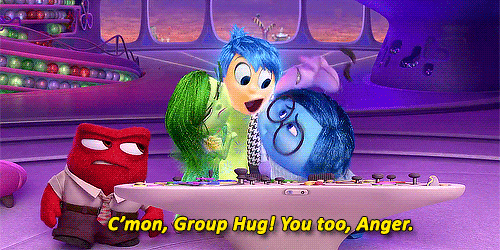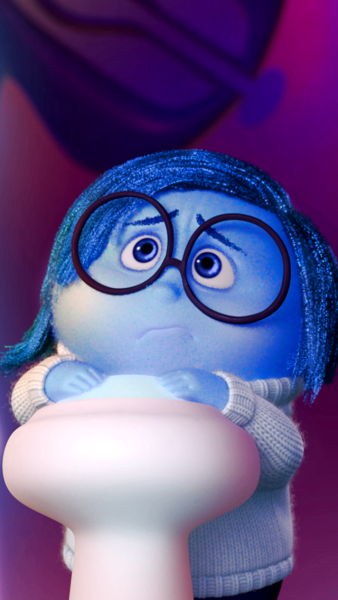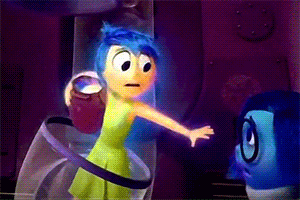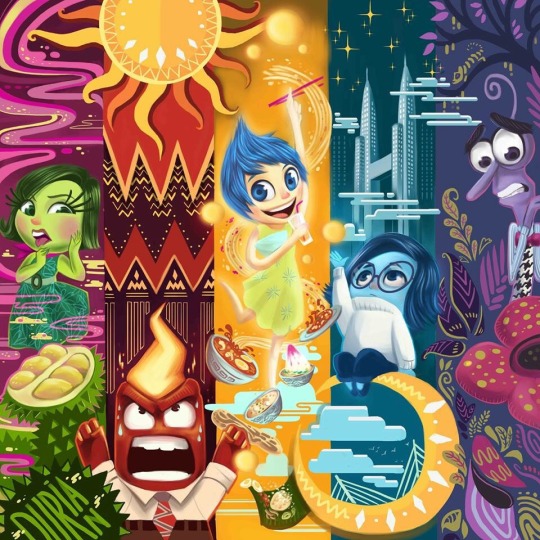A few weeks ago, I was fortunate enough to be able to attend an advanced screening of Pixar's latest animated film: Inside Out. From its commercial success and ascension to the role of seemingly instant classic, I expect many of you will have also gone to see it and I am almost certain you will have enjoyed it as much as I did.
Many writers have been commenting on the film before and since its release, many of them talking about all the things that the film 'gets right'. It has been discussed widely how the film manages to accurately represent the ways in which our minds work (both Amy Elis Nutt and Xan Brooks have written on this) but my interest in the film is less scientific.
Expectedly, my perspective on the film concerns human experience and perhaps some of the more poignant meanings of the story. Whilst it is interesting to think of how the film cleverly represents the inner workings of the mind, in a way that is both entertaining and explorationary, I think there is a more fundamental lesson we can learn from the film.
 |
| Image shared by budak-anyar-kalah-tengil |
This important lesson concerns ethics: primarily, the concept of the good life. Philosophers have examined this topic extensively (most notably Platonic and Aristotelian virtue theories), but rather than reproducing their attitudes here, I would like instead to begin with the film itself.
Needless to say, there may be spoilers ahead...
 |
| Image shared by waltyensidworld |
The film gives us a pretty clear system for how the mind words. Each person is fundamentally ruled over by five homunculi, each representing a fundamental emotion: Joy, Fear, Anger, Sadness and Disgust. Within Riley's (our protagonist's) head, Joy firmly controls everything and self-righteously forces all the other emotions to follow her lead in order to ensure that Riley remains "happy".
Eventually, everything goes wrong, with Joy and Sadness separated from the control room, Riley's islands of personality disintegrating and 'core memories' becoming clouded by Sadness' touch. Until of course, at the end of the film we are shown that Sadness touching these memories is not in fact a negative.
I consider the fundamental point of the film to concern the balancing of emotions.
In fact, main problem of the film is that two of the homunculi get separated from the controls. This all happens because of Joy. If Joy had not tried so hard to be in control all of the time, if she had understood that all the emotions have an important role to play, many of the problems in the film could have been avoided.
It is interesting that the pursuit in the film is of happiness: it is not the pursuit of Joy. However, Joy herself fails to understand this and dominates all of the other emotions ensuring that all of Riley's 'core memories' those which contribute to founding these changeable islands of personality (which in turn reveal just how we are not an indivisible whole, but actually how we are many impermanent parts) are yellow: coloured-coded to Joy. Sure, she allows the other emotions to act sometimes, but if her own supremacy is threatened, she can only understand that as detrimental to Riley.
 |
| Image shared by silent-con |
Due to her dominance, Joy's absence is catastrophic. Fear, Anger and Disgust are for the first time left alone in the control room and they have never been able to develop on their own. We are faced with a situation in which stunted emotions must try and run the show.
What the film is showing us is clear: happiness lies in more than just Joy. Furthermore, if we pursue Joy alone and disregard other emotions, we are left in a problematic state. Firstly, we can never be happy, as our other emotions do not develop and when faced with a situation Joy cannot handle, we crumble. Secondly, we fail to appreciate Joy for what it is.
A central turning point of the film is when Joy herself realises that Sadness has in many ways enabled Joy in Riley's life. Moments of negativity have allowed her to then go on to feel Joy and to appreciate it all the more for having experienced the sadness. Learning this marks a transition for both Riley and Joy: they both begin to mature.
Furthermore, when we get a brief glimpse into the minds of Riley's parents. Neither of them have Joy at the centre. Her mother is governed by Sadness, her father by Anger. What we are given is a personalised and complex representation of how people are. We are all made out of similar stuff, a fundamental human is gestured towards, yet each person we experience is very much an individual, these components are not always the same and even the fundamental parts can be structured differently.
By separating the emotion, Joy, from the concept of happiness, Inside Out presents a far more mature account of what it means to achieve a happy or good life. Happiness is not the same as Joy, to single-mindedly pursue Joy is not to pursue an enriching life. Ethical theories have tried to provide a hedonistic or pleasure-centred focus to morality, and have been long-criticised for their inability to understand a person in all their full complexity.
This, more than anything else is what Inside Out has to teach us: happiness is more than an emotion, it is a way of being. Any more than anything, to be happy is to see harmony between what are often divisive parts of the self.
 |
| Image shared by zyrexthez |
Just a few of my thoughts.
Let me know what you think and, as always, thank you for reading.
No comments:
Post a Comment